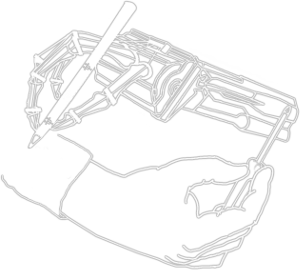| Title | Assessment of Upper-Body Movement Quality in the Cartesian-Space is Feasible in the Harmony Exoskeleton |
| Publication Type | Journal Article |
| Year of Publication | 2023 |
| Authors | De Oliveira, AC, Deshpande, AD |
| Journal | IEEE Transactions on Human-Machine Systems |
| Volume | 53 |
| Pagination | 985-995 |
| Date Published | Dec |
| ISSN | 2168-2305 |
| Keywords | Assistive robots, Atmospheric measurements, Exoskeletons, Kinematic assessment, Kinematics, Motion capture, Optical variables measurement, Particle measurements, rehabilitation robotics, Robot sensing systems, robotic exoskeleton, Training |
| Abstract | To determine the most effective interventions for poststroke patients, it is imperative to monitor the recovery process. Robotic exoskeletons' built-in sensing capabilities enable accurate kinematic measurement with no additional setup time. Although position sensors used in exoskeletons are accurate, a mismatch between the robot's and the human's joints can lead to inaccurate measurements. In addition, the robot's residual dynamics can interfere with human's natural movements and the kinematic metrics assessed in the robot would not be representative of the human's movement in free-motion. So far, the accuracy of robotic exoskeletons in assessing upper-body kinematics has not been verified. The bilateral upper-body Harmony exoskeleton has features favorable to minimize joint misalignments and the robot's residual dynamics. In this study, we examined Harmony's ability to accurately assess Cartesian-space kinematic parameters associated with the wearer's movement quality. We analyzed data collected from eight healthy participants that executed point-to-point movements with and without the presence of the robot and at fast and slow speeds. Ground truth was acquired with an optical motion capture, and we extracted the kinematic parameters from the measured data. The results suggest that Harmony can accurately measure kinematic parameters associated with movement quality, and these parameters could appropriately reflect wearer's natural movements at a slow speed. Therefore, Harmony could aid the evaluation of the effectiveness of different interventions, which is more sensitive and efficient than currently adopted clinical outcomes. This allows for individualization of a treatment plan and a detailed follow-up. |
| DOI | 10.1109/THMS.2023.3305391 |

